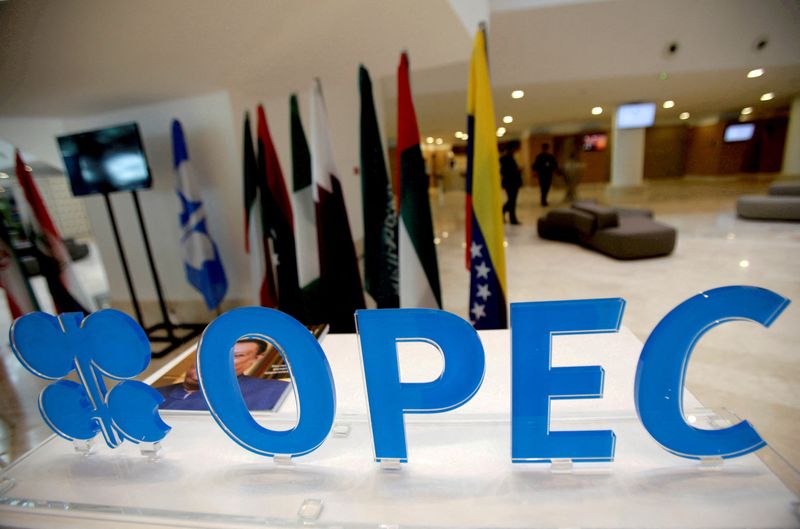By Erwin Seba and Laura Sanicola
HOUSTON/WASHINGTON (Reuters) - Saudi Arabia and other OPEC+ oil producers announced over the weekend they would launch deep oil production cuts starting next month, a surprise move that sent oil prices surging.
OPEC+, which supplies about 60% of the world's petroleum trade, called the cuts a precautionary measure to support a stable market. The OPEC+ group, which includes allied producers such as Russia, has some of the best information on global supply and demand, yet the surprise decision came two weeks after it reiterated expectations for a 2.32 million barrel per day increase in world demand this year on China's easing of its zero-COVID-19 policy.
Here is what you need to know about the production cut's impact on your fuel costs.
WHY DOES OPEC'S CUT MATTER?
Crude oil accounts for more than half the price of producing gasoline, according to the U.S. Energy Department. On Monday, global oil prices rose more than 6% in response to the news.
Those higher costs could convince U.S. refiners to trim capacity devoted to processing crude, called the refinery utilization rate. It is currently 2 percentage points lower than a year ago, said Bob Yawger, director of energy futures at Mizuho.
U.S. government data shows gasoline inventories are about 12.1 million barrels below last year, at 226.7 million barrels. If refiners reduce capacity, the drain on stocks could lead to a sudden jump in retail fuel prices, he said.
WHERE DO GASOLINE PRICES GO FROM HERE?
U.S. gasoline prices have climbed 11.6 cents a gallon from a month ago to $3.506, the AAA said on Monday. A 6% jump in oil prices would boost retail gasoline prices 10 cents a gallon, said Mark Finley, an expert in energy policy at Rice University's Baker Institute.
If oil hits $100 per barrel this year, count on a 50-cent per gallon hike, he said.
“Oil is the major raw material that goes into gasoline,” said John Auers, managing director of Refined Fuels Analytics, a fuel advisory firm. High global fuel demand has been stretching crude oil supplies.
Another factor is summer demand. Fuel prices normally rise in the summer as vacation travel takes off. "The OPEC cuts will ensure that happens," said Matt Smith, Americas oil analyst at data provider Kpler.
Rising fuel prices contributed to U.S. inflation last year, and their late-year decline cooled inflationary pressures. A move back to $4-$5 a gallon for gasoline will spur core inflation.
HOW ABOUT DOMESTICALLY PRODUCED U.S. OIL?
The U.S. pumped 12.5 million barrels per day (bpd) in January, and shale oil discoveries have turned it into a major crude exporter. But the country consumes 20.28 million barrels a day, so it remains a net importer although U.S. imports of foreign petroleum are down since the peak in 2005.
What's more, U.S. shale oil is lighter than grades preferred by many refiners, requiring a blending with oil from Canada, South America or elsewhere.
Recently, shale production gains have slowed as producers limited spending on new projects because of past losses. Producers cited government regulations, and investors also were demanding higher profit margins. Shale output this month will rise about 68,000 bpd, less than half the 141,000 bpd increase last August.
HAS OPEC TURNED AGAINST THE U.S.?
Saudi Arabia is OPEC's de facto leader and one of the world's leading producers and exporters of crude oil. It is a historic ally even though relations have cooled. Saudi Arabia does not export much oil to the U.S. and owns the nation's largest refinery.

OPEC's reason for cutting production - as a precautionary step - suggests it expects global oil demand to slow this year. That view is not universally accepted; most analysts expect China's oil consumption to grow as the country emerges from zero-COVID policies.
Jim Krane, energy research fellow at Rice University's Baker Institute, said Saudi Arabia was once a moderating influence within OPEC but in the past seven years "has gotten more hawkish on oil prices".